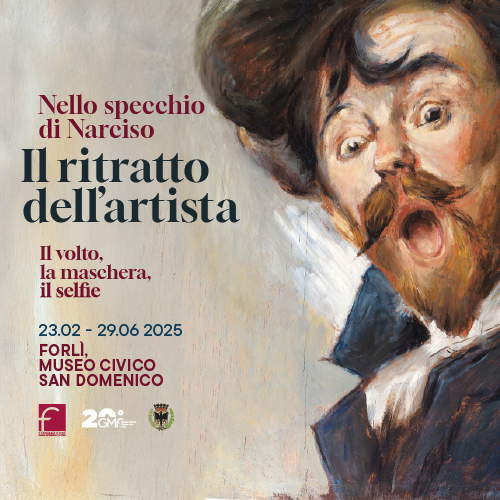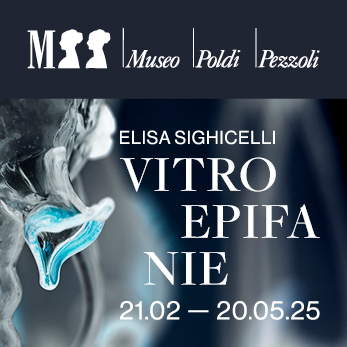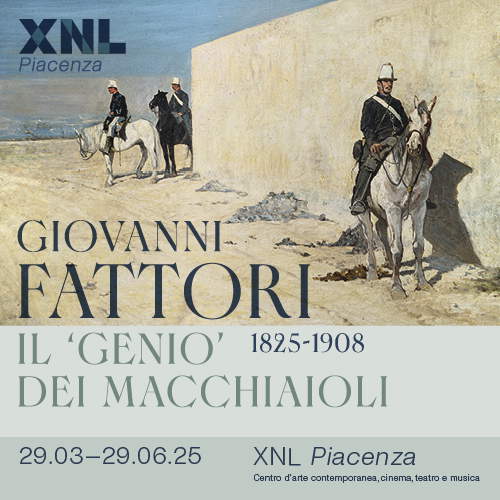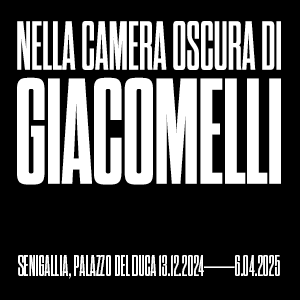Enrico Baj's funeral of anarchist Pinelli finds home at Milan's Museo del Novecento
Milan ’s Museo del Novecento welcomes a fundamental work of Italian art history and collective memory: I funerali dell’anarchico Pinelli (1972) by Enrico Baj (Milan, 1924 - Vergiate, 2003). From Thursday, Feb. 20, the celebrated polymateric installation will be exhibited in a monographic room dedicated to the artist within the recently refurbished Gesti e processi [Years 60-90] Gallery. It is a strategic and symbolic placement intended to strengthen the museum’s role as a space connecting art, history and citizenship.
The work, three meters high and ten meters long, is a collage of figures cut out of wooden silhouettes, assembled with Baj’s typical technique. Its visual impact is powerful: decomposed figures, distorted expressions, heterogeneous colors and materials that convey dismay and pain. The reference to Picasso’s Guernica is evident, not only in the compositional layout and immersive spatiality, but also in the intent of denunciation. Just as the 1937 masterpiece bore witness to the horror of the Spanish Civil War, Baj restores the sense of injustice and violence associated with the death of Giuseppe Pinelli, the anarchist who fell from a window of the Milan police headquarters in 1969 under circumstances that have never been fully clarified.
The placement of the work is designed to amplify the dialogue with the city. The monographic room overlooks Piazzetta Reale, allowing passers-by to catch a glimpse of the work even from the outside, as is already the case with the Fontana Room on Piazza Duomo. This choice underscores the museum’s desire to be a “threshold” between exhibition space and urban space, in which art does not remain confined within the halls, but becomes part of the city’s fabric.
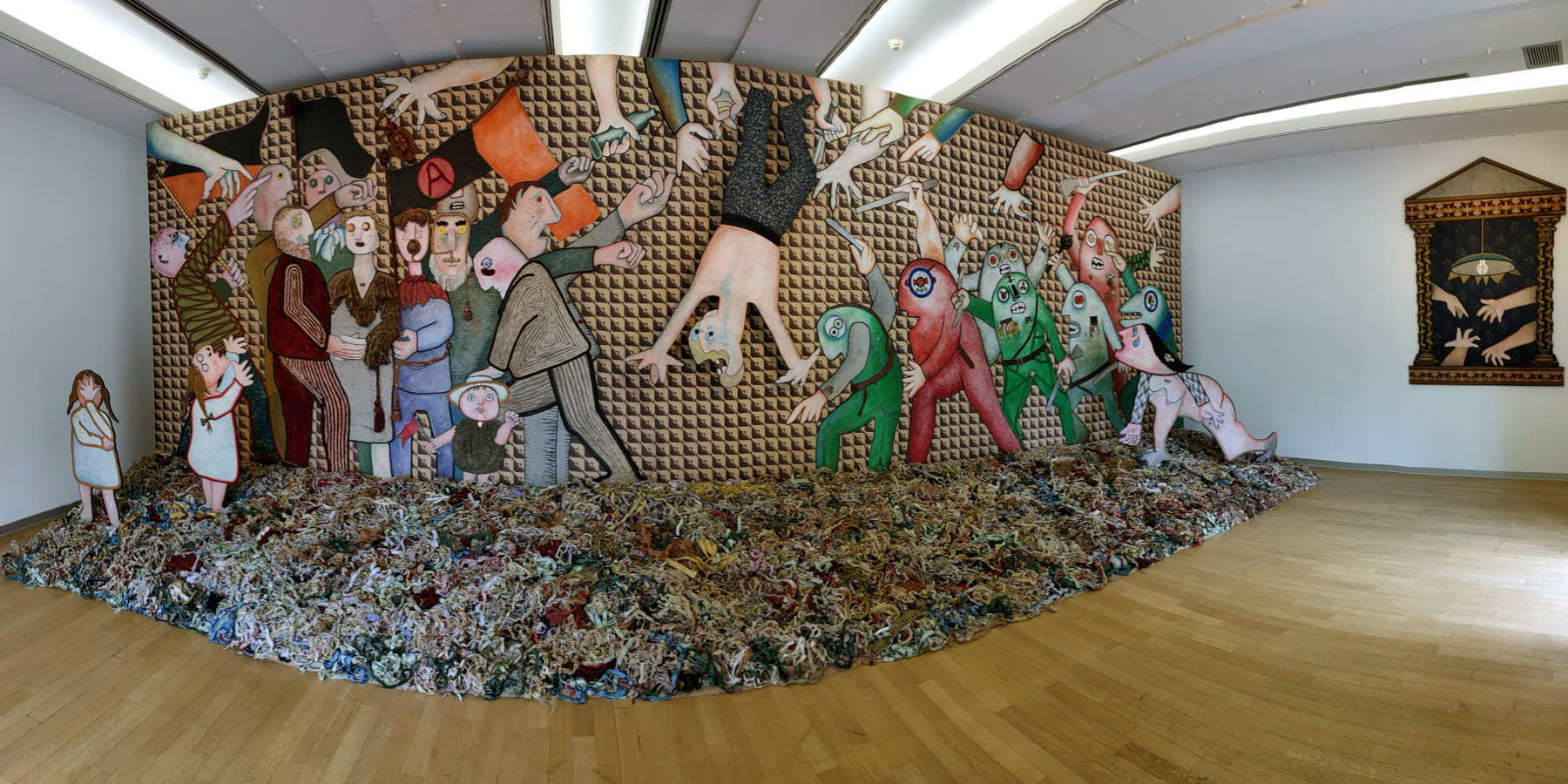
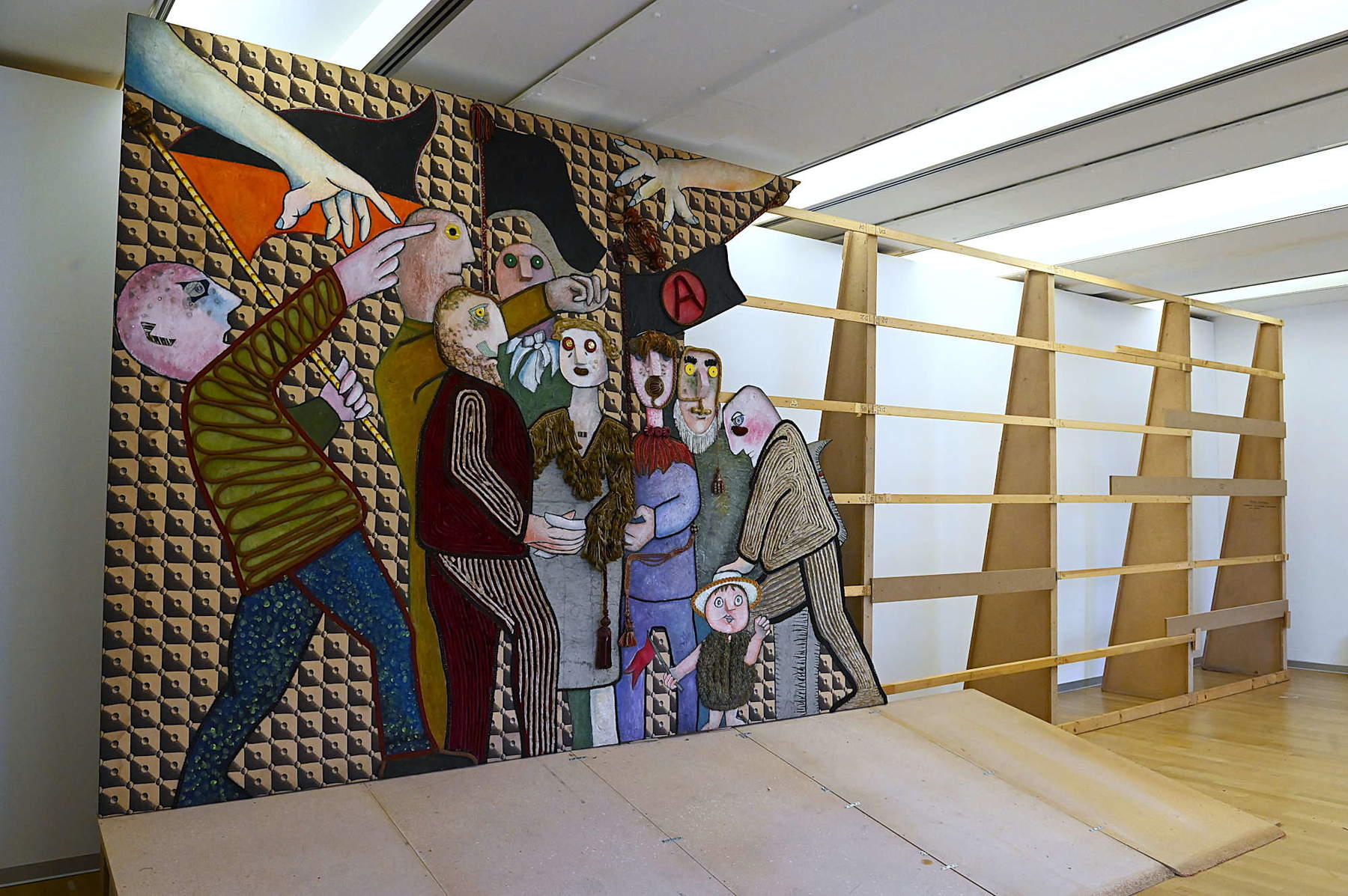
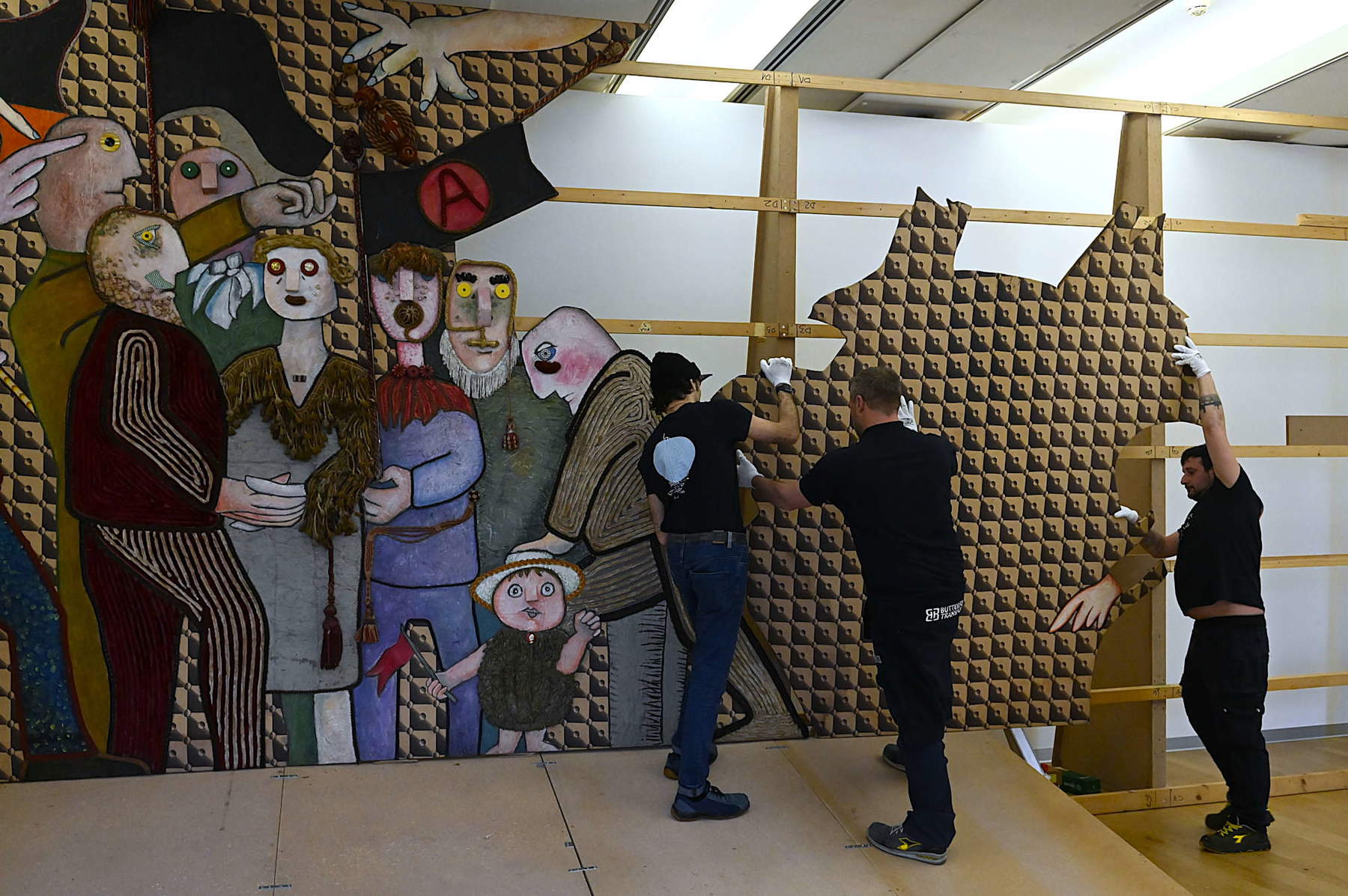
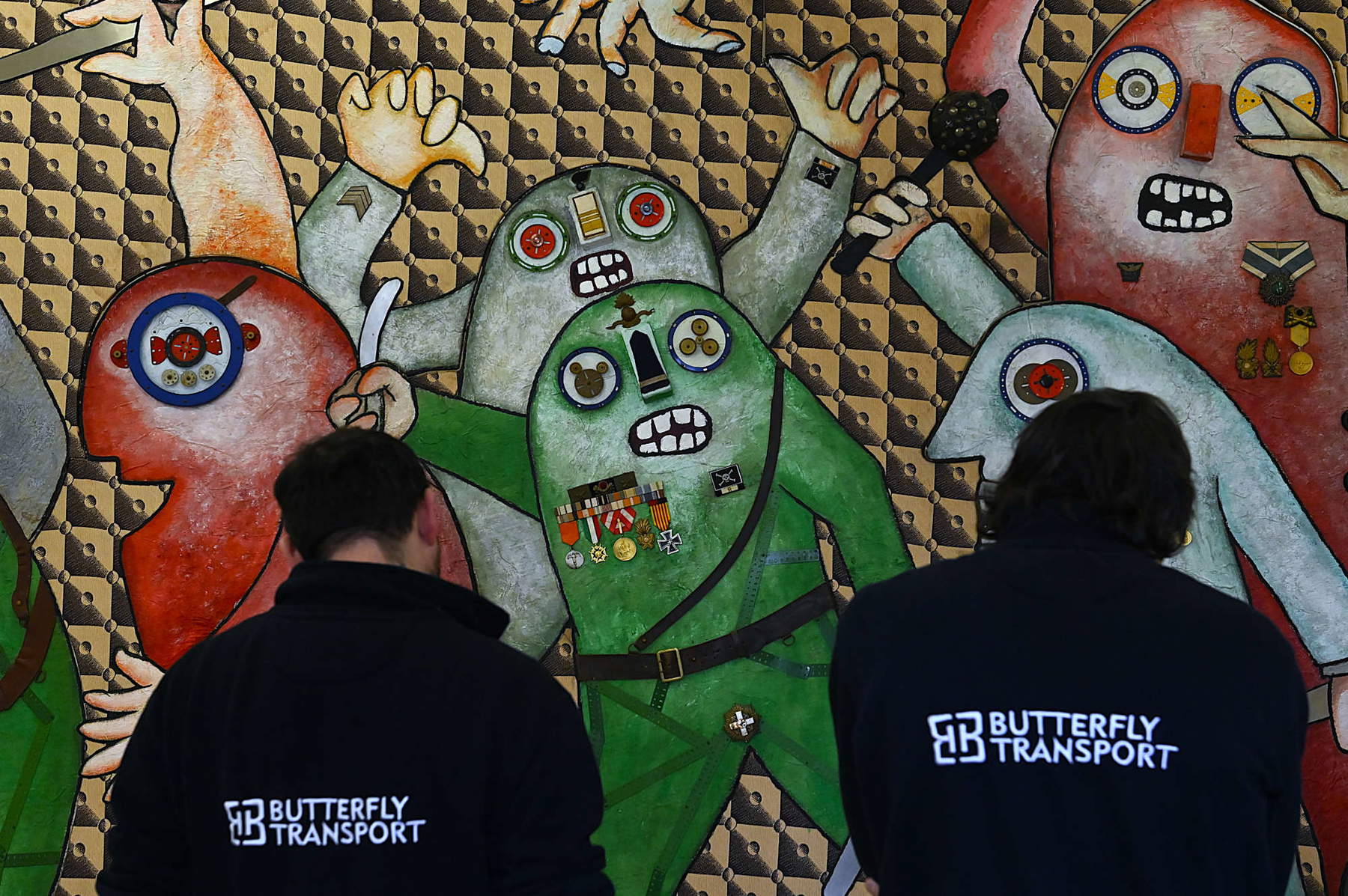
The Gallery’s new arrangement of Gestures and Processes offers an articulated itinerary that contextualizes Baj’s work within the Milanese cultural ferment between the 1960s and 1990s. Introducing the visitor are photographs by Ugo Mulas, which immortalize the creative gesture and spirit of artists such as Piero Manzoni and the protagonists of Nouveau Réalisme, a movement with which Baj shared a subversive and participatory spirit.
A founder of the Nuclear Art Movement, Baj always placed human beings, with their drives, desire for freedom and civil commitment, at the center of his research. His work is part of a broader narrative that spans the post-World War II avant-garde, continuing with Programmed and Kinetic Art, Italian Pop, Arte Povera and video experimentation. The itinerary culminates with another highly symbolic work, Maurizio Cattelan’s Lullaby, made from the rubble of the PAC, destroyed in the 1993 Mafia bombing. A closure that suggests a reflection on the Short Century and, at the same time, an opening toward new directions in contemporary art.
The arrival of I funerali dell’anarchico Pinelli (The Funeral of the Anarchist Pinelli ) at the Museo del Novecento is thus not only meant to be an exhibition operation, but also an act of memory and civic responsibility. A work that continues to interrogate and question the relationship between art, history and justice.
 |
| Enrico Baj's funeral of anarchist Pinelli finds home at Milan's Museo del Novecento |
Warning: the translation into English of the original Italian article was created using automatic tools. We undertake to review all articles, but we do not guarantee the total absence of inaccuracies in the translation due to the program. You can find the original by clicking on the ITA button. If you find any mistake,please contact us.





